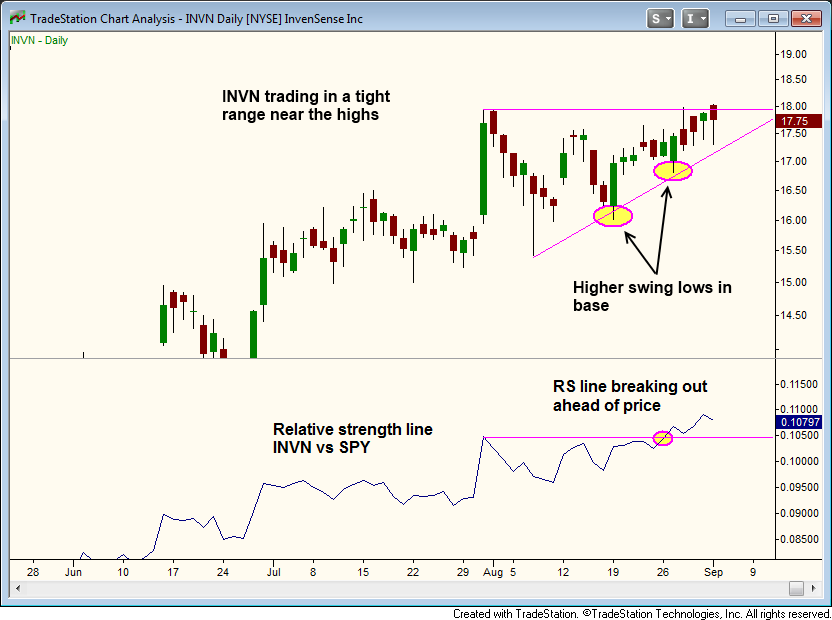Current signal generated on close of August 15.
Portfolio long exposure can be anywhere from 30%-50% if you just joined the letter, or up to 100% (if your stocks are holding up).
Past signals:
- Buy signal generated on close of July 11
- Neutral signal generated on close of July 5
- Sell signal generated on close of June 24
today’s watchlist (potential trade entries):

Having trouble seeing the open positions graphic above? Click here to view it directly on your web browser instead.
open positions:
Below is an overview of all open positions, as well as a report on all positions that were closed only since the previous day’s newsletter. Changes to open positions since the previous report are listed in pink shaded cells below. Be sure to read the Wagner Daily subscriber guide for important, automatic rules on trade entries and exits. Click here to learn the best way to calculate your share size.
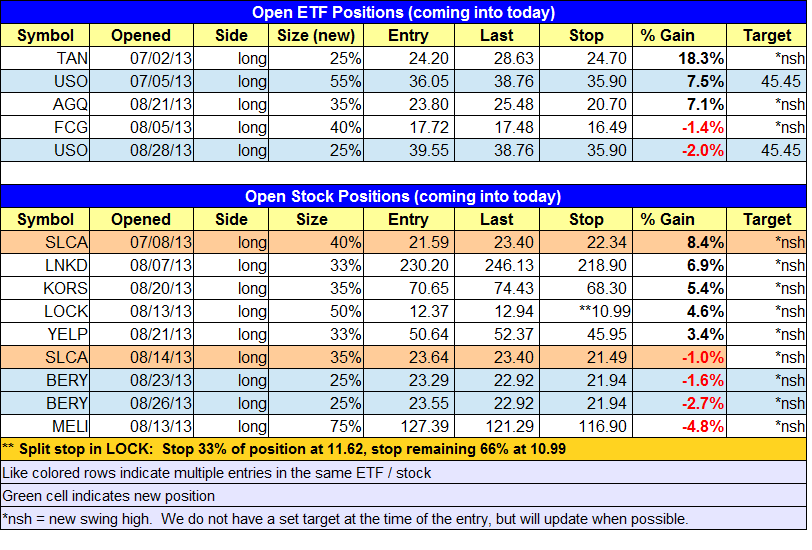
Having trouble seeing the open positions graphic above? Click here to view it directly on your web browser instead.
closed positions:

Having trouble seeing the closed positions graphic above? Click here to view it directly on your web browser instead.
ETF position notes:
- No trades were made.
stock position notes:
- $HIMX buy setup was cancelled due to the price running more than 1.3% above our entry within the first five minutes of trading. We will continue to monitor the action for a potential pullback entry during the next few weeks.
ETF, stock, and broad market commentary:
Stocks gapped up by 1% or more on the open, but failed to follow through and slid lower the rest of the session, filling in the gaps created by the higher open. The early morning action was disappointing, but par for the course the past few weeks, as we have yet to see any follow through (intraday) in the major averages after an initial surge. The market timing model will remain in neutral until the NASDAQ Composite breaks the 50-day MA (a sell signal), or one of the averages prints a follow through day (a buy signal).
After a false breakout to new highs in mid- to late July, Guggenheim Solar ETF ($TAN) has formed a six week base, with the lows of the current base finding support at the highs of the previous base, around $26. $TAN also held support from the rising 10-week MA in August. There were a few shakeouts, but the price action never closed below the 10-week MA. $TAN has held up well the past few weeks, setting higher swing lows (so far) while most averages have set lower lows. We are monitoring $TAN for a potential breakout entry to add to our existing long position.
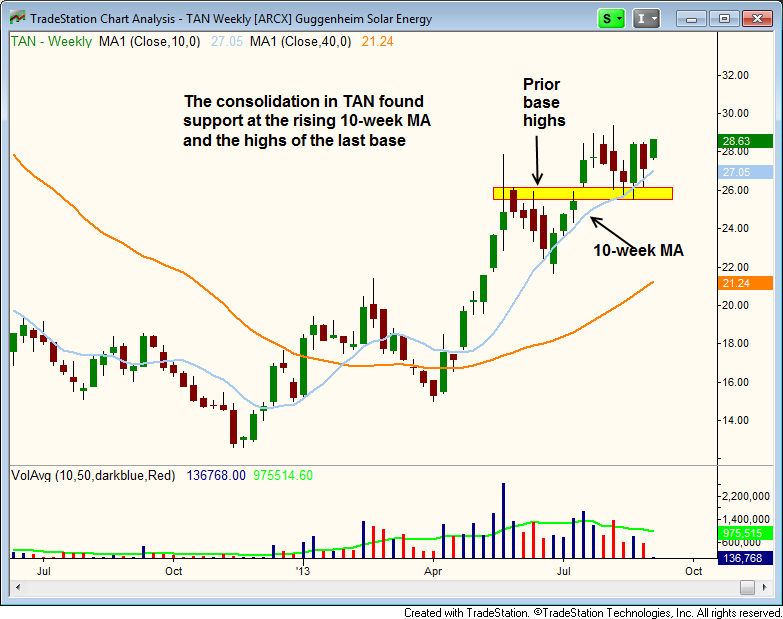
First Trust ISE Revere Natural Gas ($FCG) continues to trade in a tight range on the weekly and daily charts. The daily chart below shows the tight action just below the highs of the range (red dotted line), but still above the rising 50-day MA. The 20-day EMA is also above the 50-day MA and pointing higher as well. The volume has been quite the past few weeks, so we are on the lookout for a potential breakout above the range high within the next week or two. We are placing $FCG on today’s watchlist, as we plan to add to our existing position on a breakout above the range highs. Trade details can be found in the watchlist section above.
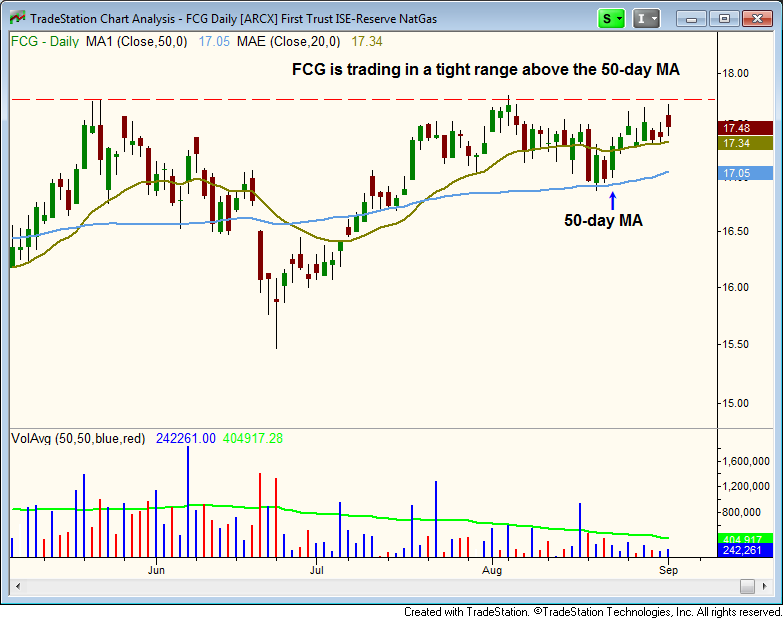
After a three-day shakeout, our long position in ProShares Ultra Silver is trading near the prior swing high and is poised to establish a new swing high this week. If the price action stalls around $26, then we could see one or two weeks of consolidation above the rising 20-day EMA.
On the stock side, $MELI gapped higher from an undercut of the recent lows on a nice pick up in volume. For those who are not already long, a move above Tuesday’s high is a low risk, unofficial entry point at $123.15 (use stop listed in open positions section).
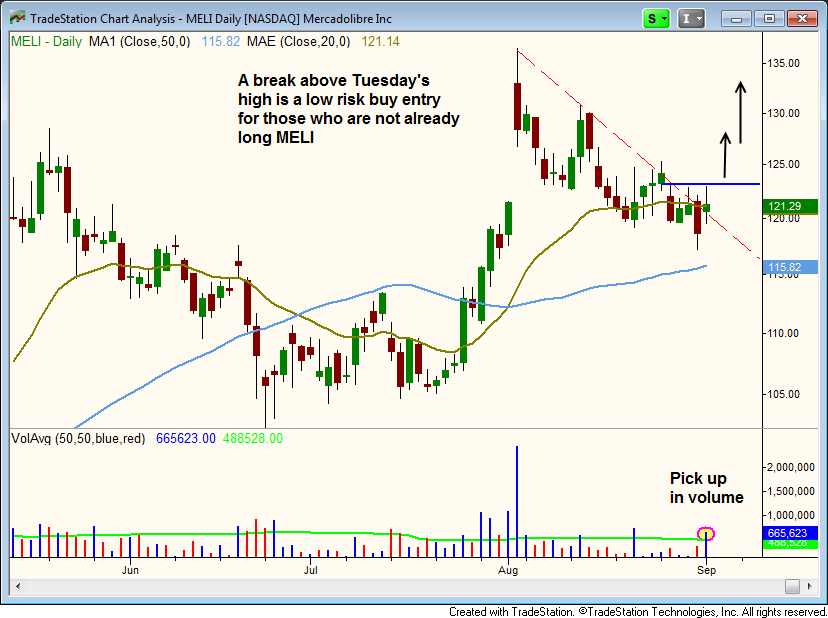
InvenSense – ($INVN) has held up really well as of late, posting higher swing lows in the base while the market has set lower lows. One easy way to spot relative strength is to plot a relative strength line (not to be confused with RSI) at the bottom of a chart. On the chart below, the daily price action in $INVN is divided by the $SPY. When the relative strength line of $INVN performs better than the price action, it is a clear sign of relative strength. It is not a guarantee that a breakout will work, especially since market conditions are not ideal. However, if/when the market finds some traction, $INVN may be one of the first stocks to move out.
